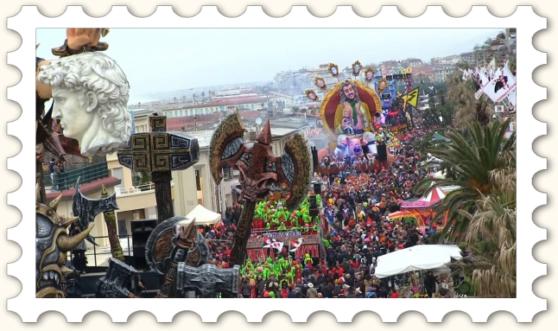 | Walk to the sea during the Viareggio Carnival
The tradition of the parade of chariots (at first read) in Viareggio dates back to 1873, [2] when some rich bourgeois decided to disguise themselves to protest against the too many taxes they were forced to pay. [Citation needed] Tradition has it that the idea is born at the tables of the Caffè del Casino, inaugurated forty years earlier. [2] Since then every year this parade allows to eliminate the discontent of so many people and, at the end of the century, the triumphal chariots appeared in stucco, heavy materials canvas, later replaced by the molded paper mache, to find the maximum refinement in the 30's 900 with the cast paper.
The First World War caused a war break that lasted 6 years. The event resumed in 1921 and the wagons paraded on two wonderful avenues to the sea.
On 20 February 1971 the first local carnival of the Darsena took place [3].
The third show of the 2011 edition broke every record, in fact there were more than 325,000 [4] people applauding the papier-maché wagons that marched along the seaside promenade viareggina.
The papier-mâché
Papier-mâché is a preparation essentially made of water, glue, chalk and paper; the working process starts from the creation of a clay model. With a cast of plaster on this model the negative of the cast is obtained, inside which the strips of paper that have been previously soaked in a mixture of water and glue are applied. Thanks to this material, the tankers are able to shape masses and very large volumes and, thanks to the lightness of the empty shapes, the cart is a spectacular self-propelled structure. The strips are then made to adhere to the mold, which then takes several hours to dry.
Afterwards the papier-mâché work is removed and, after having been sanded with sandpaper, the decoration is carried out with acrylic or tempera paints, which are covered with a further glossy protective varnish. The first papier-mâché cart was made in Viareggio, in 1925: "The Knights of Carnival" by Antonio D'Arliano. Currently one of the great masters of papier mache is Arnaldo Galli who together with his brother Renato and Silvano Avanzini has collaborated for the construction of stage materials in films by Federico Fellini as Casanova and Boccaccio '70, building an Anita Ekberg of enormous measures. Papier-mâché masks of the Viareggio masters have been the setting for the opening ceremony of the 1990 World Cup and the closing one of the XX Olympic Winter Games. |
|
|

